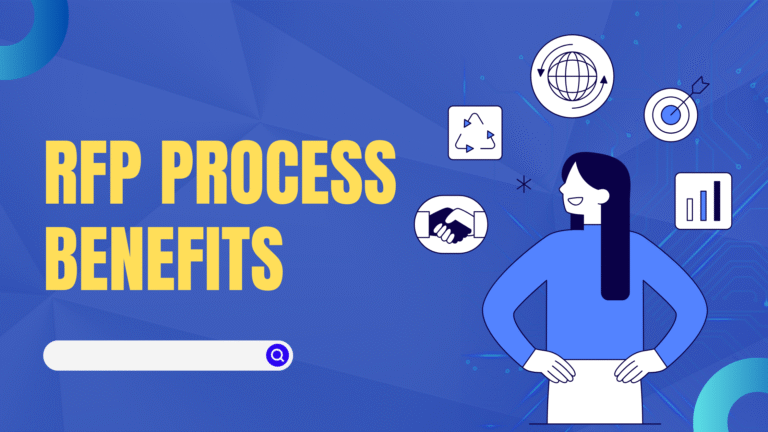In the competitive world of business, efficiency and precision are key drivers of success. Request for Proposal (RFP) processes can be particularly challenging, often involving intricate collaboration and extensive data management. Fortunately, the advent of RFP automation tools has revolutionized how companies handle their bidding procedures, driving significant improvements across various operational facets. Below, we dive into the advantages that such automation technology offers, providing invaluable insights for businesses seeking to refine their proposal efforts. Keep reading to explore how these tools are changing the game.
Exploring RFP Automation: Transforming the Proposal Process
Managing RFPs manually can be time-consuming and prone to errors, but an RFP automation tool transforms this process into a streamlined, efficient operation. By using pre-designed templates and content libraries, businesses can quickly create professional, comprehensive proposals that meet requirements while reducing staff workload and turnaround times. This efficiency gives companies a competitive edge in the bidding process.
With a centralized platform for proposal documentation, RFP automation simplifies organization and prevents duplicate efforts, especially when handling multiple RFPs. Smart autofill and content customization features save time while enabling tailored responses that align with client needs, ensuring a higher quality and more personalized approach.
Enhancing Collaboration and Efficiency with RFP Automation Tools
RFP automation tools are crucial for fostering team collaboration and streamlining communication. They provide real-time updates and version control, avoiding confusion and ensuring consistency across all platforms. These tools also integrate with popular software suites like CRM systems and cloud storage services, eliminating the need for repetitive data entry and data silos.
Managers can gain greater oversight over the proposal process by assigning tasks, tracking progress, and ensuring deadlines are met. Dashboard features provide a bird’s-eye view of ongoing projects, enabling complex proposal efforts. Notification and reminder systems within these tools help team members stay aware of their responsibilities and timeframes, ensuring no critical task slips through the cracks. This is essential for meeting the demands of RFP submissions.
The Role of RFP Automation in Reducing Operational Costs
RFP automation can significantly save businesses by eliminating the need for manual data entry and document preparation, allowing them to reallocate human resources to more strategic roles. This reduces labor costs and maximizes employee potential by engaging them in higher-value activities. Automated responses to RFPs help businesses capture more opportunities, resulting in direct savings and enhanced income prospects.
Error reduction is another financial benefit, as automation reduces the likelihood of mistakes in proposal documents, which can lead to lost bids and negatively impact the bottom line. Analytics provided by RFP automation tools help companies analyze their proposal strategies and identify areas for more effective resource utilization, ensuring the best possible return on investment in the proposal process.
Improving Accuracy and Compliance in Responses Using RFP Technology
RFP automation is a crucial tool for businesses to ensure accurate and consistent responses to RFPs. Its standardization features maintain brand integrity and compliance with industry standards. The ability to rapidly update content across multiple proposals ensures that all documents reflect the latest company information and legal requirements.
Automated checks and balances flag potential discrepancies before submission, preventing costly legal compliance issues. Advanced security protocols and encryption protect sensitive data, ensuring compliance in content and data handling. This is especially important as businesses become more vigilant about cyber threats and regulatory demands for data privacy.
Leveraging Data Analytics for Strategic Decision-Making in RFP Processes
RFP automation tools can collect and analyze vast amounts of proposal-related data, revealing trends and performance metrics that can be used to refine proposal strategies and business development tactics. Data on outcome data, such as win-loss ratios and feedback, can provide insights on an organization’s RFP responses, enabling them to adapt their proposals to better meet client needs and increase their chances of success.
By tracking resource allocation during the proposal process, businesses can identify areas for efficiency improvement, enabling optimal allocation of time and resources. Advanced reporting features in RFP automation tools allow executive teams to assess the impact of their proposal activities on business growth, aligning RFP efforts with broader objectives and ensuring a cohesive approach to market expansion.
Overall, the adoption of RFP automation tools represents a significant leap forward for businesses looking to enhance their proposal processes. By facilitating collaboration, reducing costs, and ensuring accuracy and compliance, these tools provide organizations with a distinct competitive advantage. With the added benefit of data analytics, businesses can not only improve their current RFP responses but also strategically shape their future operations for continued success.


